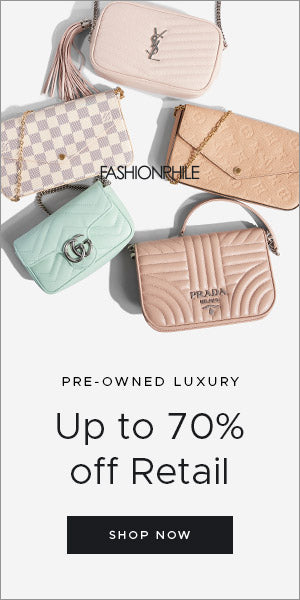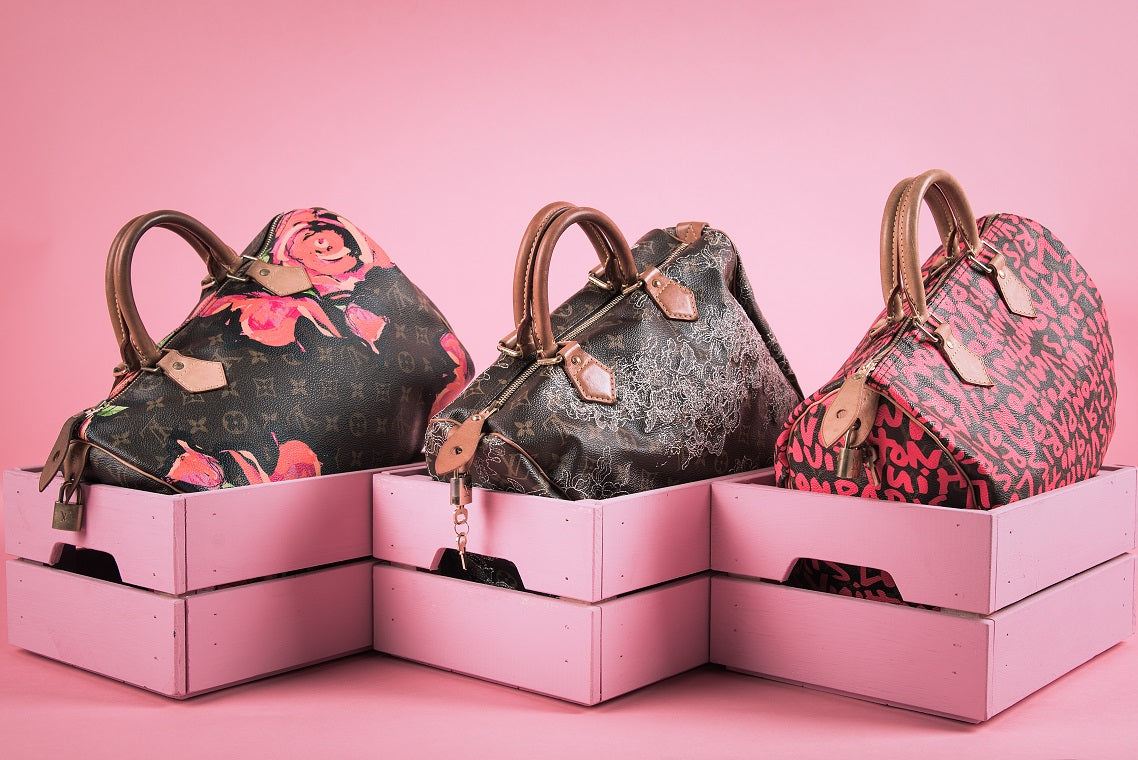
The fashion industry is increasingly recognized as a major contributor to pollution, prompting fashion enthusiasts to seek out sustainable and stylish alternatives. One effective approach is to participate in the circular fashion economy, where items are bought and sold instead of being discarded and ending up in landfills. Learn more on what circular fashion is and how you can contribute.
If you're interested in delving into the world of sustainable fashion and its impact on the environment, you've landed in the perfect spot. Continue reading to discover more about the circular fashion economy and its significance.
What is Circular Fashion?
Circular fashion is a sustainable model that aims to keep clothing in circulation for as long as possible while retaining its value. It functions as a regenerative system that emphasizes the reusability and longevity of fashionable items.
Circular fashion aligns with the principles of the circular economy, which aims to use resources more efficiently and reduce waste. It emphasizes the regeneration and preservation of natural systems, and the responsible use of resources, promoting a more sustainable and socially responsible fashion industry.
Circular fashion seeks to move away from the traditional linear fashion system, which is characterized by the production, consumption, and disposal of garments. Instead, it promotes a closed-loop system, where materials and products are kept in circulation for as long as possible. Circular fashion involves innovative practices such as designing for durability, using sustainable materials, implementing recycling and upcycling processes, and promoting rental and resale platforms.
Unlike the traditional linear fashion system, circular fashion products are designed to serve multiple users, not just a single consumer. This system prioritizes durability and the use of renewable materials, with the aim of reducing resource consumption and waste generation.
Top brands in fashion, including top luxury bag brands, have long-term commitments to the circular economy.
Why Fast Fashion is Bad

Shockingly, the fast fashion industry is the runner-up for the title of world's most polluting industry after the oil industry. The UN Environment Programme reports that the fashion industry is the second most prominent user of water and generates 8-10% of worldwide carbon emissions. This is due to its exploitative production practices that result in quick and unsustainable creation of trendy clothes; up to 100 billion garments are produced annually. Regrettably, many of these items are of poor quality and break down easily, leading to a significant amount of waste in landfills.
To better understand the consequences of fashion, we suggest to take a look at the 68 Fast Fashion Facts That Will Break Your Heart. Here are some of them:
- Textile production was responsible for 1.2 billion tons of CO2 equivalent in 2015 alone. This is more than the emissions from all international flights and maritime and shipping combined.
- The ratio of raw material ending up in the final product for polyester and cotton is roughly 65%, meaning 35% is sent to landfill.
- If the apparel industry continues on its current path, by 2050, textiles production would use more than 25% of the worldwide carbon budget for a 2°C pathway.
3 Pillars Of Circular Fashion

The UNEP Circularity concept refers to the 9 R’s:
- Reduce by increasing resource efficiency during manufacturing or use less natural resources;
- Refuse and abandon the use of a resource or product through elimination without losing function;
- Redesign the product or service as a product-as-a service or sharing business models;
- Reuse of a product that is still functioning for its original purpose; Repair a product in disrepair so it can be reused for its original purpose;
- Restore and increase the quality of an otherwise obsolete product to quality standard;
- Remanufacture used parts into a just-as-new condition through combination of parts;
- Repurpose a redundant product considered as waste, reprocess and give it a different function;
- Recycle materials from waste to be reprocessed as inputs for production, excludes energy recovery.
These 9 principles can be expressed through the 3 pillars of circular fashion. Here they are:
Environmental Sustainability
Circular fashion seeks to minimize the negative impact on the environment by reducing resource consumption and waste generation. This includes prioritizing the use of sustainable materials, implementing recycling and upcycling practices, and promoting energy-efficient production methods.
Social Responsibility
Circular fashion emphasizes fair and ethical practices throughout the supply chain, ensuring the well-being of employees and communities involved in the production process. This involves safeguarding fair wages, safe working conditions, and respecting workers' rights.
Economic Viability
Circular fashion aims to create a profitable and resilient industry by implementing circular business models that maximize resource efficiency and minimize waste. This includes practices such as product design for durability and longevity, repairing and refurbishing garments, and promoting resale and rental platforms.
By focusing on these three pillars, circular fashion strives for a more sustainable, socially responsible, and economically viable fashion industry.
What is Circular Fashion Design?
One of the concepts often used when we discuss circular fashion is circular fashion design.
Circular fashion design refers to an approach in the fashion industry that incorporates principles of the circular economy to create sustainable and environmentally friendly products. It involves designing garments and systems that minimize waste, maximize the use of materials and products, and regenerate natural systems. Circular fashion design aims to break away from the linear "take-make-dispose" model and instead focuses on creating a closed-loop system where resources are kept in circulation for as long as possible.
Key principles of circular fashion design include the following concepts.
Designing out waste
This principle focuses on designing products with a reduced environmental impact, considering factors such as material selection, product durability, and reparability. By minimizing waste throughout the product lifecycle, circular fashion design aims to reduce the industry's overall environmental footprint.
Keeping materials and products in use
Circular fashion design promotes the reuse, repair, and repurposing of garments and materials to extend their lifespan. It encourages innovative approaches such as upcycling or transforming existing garments into new pieces. By keeping products in use for longer, it reduces the need for new production and mitigates resource depletion.
Regenerating natural systems
This principle focuses on the use of sustainable materials and production processes that have a positive impact on the environment. Circular fashion design incorporates the use of renewable resources, considers biodegradable materials, and emphasizes the importance of reducing pollution and harmful chemicals.
Circular fashion design goes beyond recycling and aims to create a more sustainable and responsible fashion industry that addresses the environmental and social challenges of the current linear fashion system.
Examples of Circular Fashion Companies
Here are some examples of circular fashion companies:
- A.BCH - This Australian fashion label is committed to circularity and uses renewable, organic, and recycled materials in its products.
- Reformation - This women's clothing brand has launched RefRecycling, powered by SuperCircle, in which customers can return any well-worn Ref goods (from clothing to shoes) to the company for recycling.
- Eeden - This company uses a closed-loop production process to create fully sustainable clothing made from 100% biodegradable materials.
- Infinited Fiber - This Finnish biotech company has developed a process to recycle textile waste into a new, high-quality fiber that can be used to create new fabrics.
- Mud Jeans - This Dutch brand offers a unique denim subscription service where customers can rent jeans and return them to the company after use for recycling.
- We at Bagaholic, a Dutch-based designer bags authentication company, also contribute to zero-emission future by extending the lifespan of designer items worldwide.
These are just a few examples of the growing number of circular fashion companies working toward a more sustainable and responsible industry. By prioritizing durability, renewability, and recyclability, these companies are making strides in reducing waste and promoting a circular economy for fashion.
What You Can Do For Circular Fashion
Here are some simple steps to take to contribute to circular fashion and its principles.
Buy Pre-Owned Clothing
Purchasing pre-owned luxury items plays a crucial role in minimizing the environmental impact. Unlike fast fashion, circular fashion items are often ethically produced with high-quality materials, ensuring their longevity. By supporting the pre-owned market, we extend the life of products that have already been produced, instead of constantly creating trendy items that quickly end up in landfills.
Research shows the significant environmental benefits of buying pre-owned designer items. For example, opting for a pre-owned designer bag instead of a new one can save over 8kg of carbon dioxide emissions and 22l of water. Similarly, choosing pre-owned designer shoes over new ones can save 3kg of carbon dioxide emissions and over 7l of water. These statistics highlight the positive impact that conscious consumer choices can have on reducing resource consumption and greenhouse gas emissions.
By embracing pre-owned luxury items, we not only support sustainability and responsible consumption but also promote a circular economy where goods are valued and utilized for as long as possible.
Hence, buying pre-owned items means that you put less pressure on the environment to extract raw materials for a brand-new bag. So, if everyone bought just one used item instead of a brand new one, it would have a positive impact on the planet.
Remember that buying secondhand designer items is always associated with the risk of purchasing counterfeit. Order professional authentication before transferring the money to the seller's account. Select from the services below.
Resell Your Unwanted Clothes and Handbags
If you have designer clothing and accessories that you no longer wear in your closet, you can always spring clean and sell your unwanted luxury items at Fashionphile. You can also use various exchange platforms and Facebook groups to exchange your old items and breathe new life into your outfits. Rather than purchaing brand new items that put pressure on our planet to extract even more raw materials, you can refurbish and restore your beloved luxury items.
Consider donating your items to charity or selling them to free up some funds for your next designer purchase. By doing so, you're not only supporting a circular fashion economy but also preventing the unnecessary accumulation of waste in our landfills, which harm our planet and deplete the ozone layer. Just imagine the unfortunate scenario of precious designer items ending up in landfills, when they could bring joy and benefit to someone else. Remember, what one fashionista may consider old, another fashionista may treasure as gold!
Summary: Circular Fashion Is The New Reality
Circular fashion movement will be growing in the next years, and you can always do your part in replacing fast fashion with the circular fashion. Shopping at trusted pre-owned luxury resellers is good for the economy and the environment, so check out the preloved designer items on Fashionphile.
If you're buying luxury bags from private sellers, always authenticate to make sure you're contributing to the circular fashion, not the counterfeiter's bank account.






